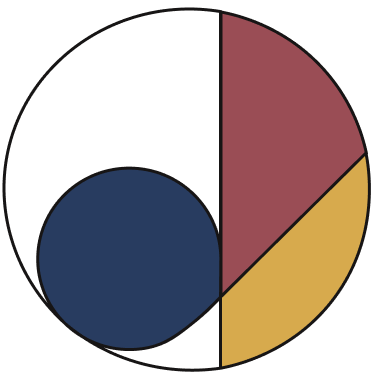Project Info
Client:
YCH Group Pte Ltd
YCH Group Pte Ltd
Role:
Workshop Preparation, Data Analysis,
User Research (Interviews & Maze Questionnaire), Workshop Co-Facilitation
Workshop Preparation, Data Analysis,
User Research (Interviews & Maze Questionnaire), Workshop Co-Facilitation
As part of a strategic transformation initiative for YCH Group, Unigons was commissioned to lead the company’s rebranding efforts, while Unigons X (our team) supported on the research and workshop side to ensure the brand direction was grounded in leadership alignment and business realities. I was involved in a cross-functional project to align leadership perspectives, validate the company’s long-term vision, and shape a roadmap toward YCH’s goal of becoming a $1B supply chain powerhouse. My work spanned across human-centered design, facilitation, and analytical synthesis to inform strategic decision-making.
One of the key challenges I faced was the mixed reception from leaders—some were unclear about the purpose of the workshop and needed to be brought on board early. Another hurdle was demonstrating the tangible link between branding and business performance, which required carefully framing activities and discussions to show its impact on growth. Additionally, synthesising leadership interviews proved difficult, as quantifying qualitative responses—even with AI tools—was complex. I had to translate this data into meaningful workshop exercises that not only reflected the leaders’ own voices but also pushed them toward actionable alignment.
Pre-Workshop Prep
User Interviews and Survey
User Interviews and Survey
As part of the groundwork, we conducted several user interviews with YCH leaders to capture their perspectives on the chairman’s vision, key business challenges, views on customer centricity, and alignment with company values. To streamline analysis, we leveraged AI tools to transcribe and cluster interview responses into common themes—an approach that saved significant time compared to manually mapping insights on Mural.
In parallel, we distributed a survey to employees beyond leadership positions to gather a broader perspective on similar areas such as vision, challenges, and organisational values. Using Maze, a survey tool with built-in AI capabilities, we were able to automatically quantify and group responses, ensuring a more efficient and organised synthesis of employee insights.

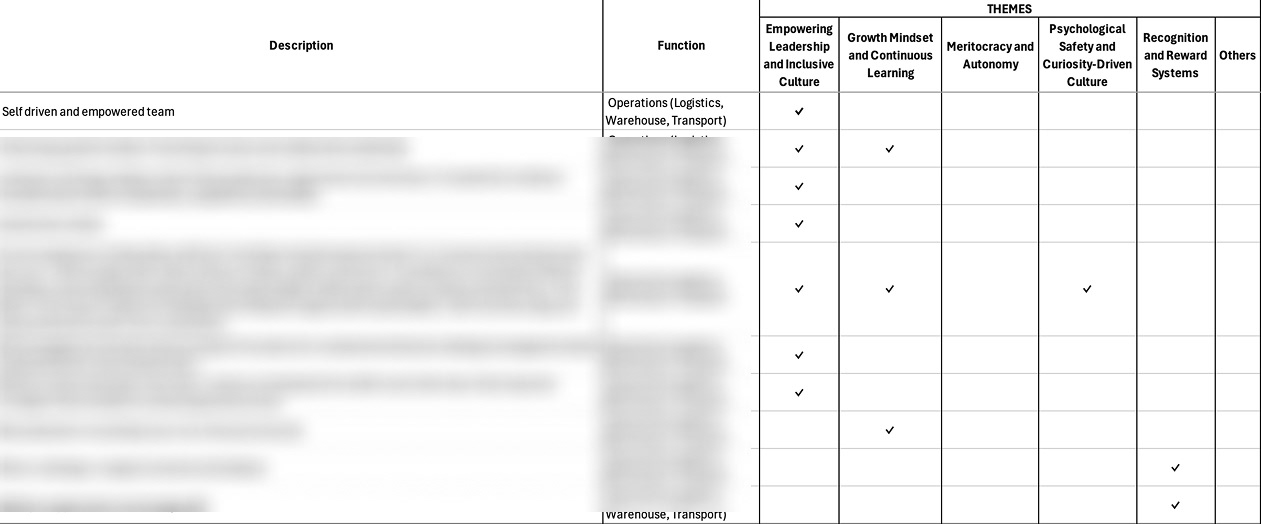
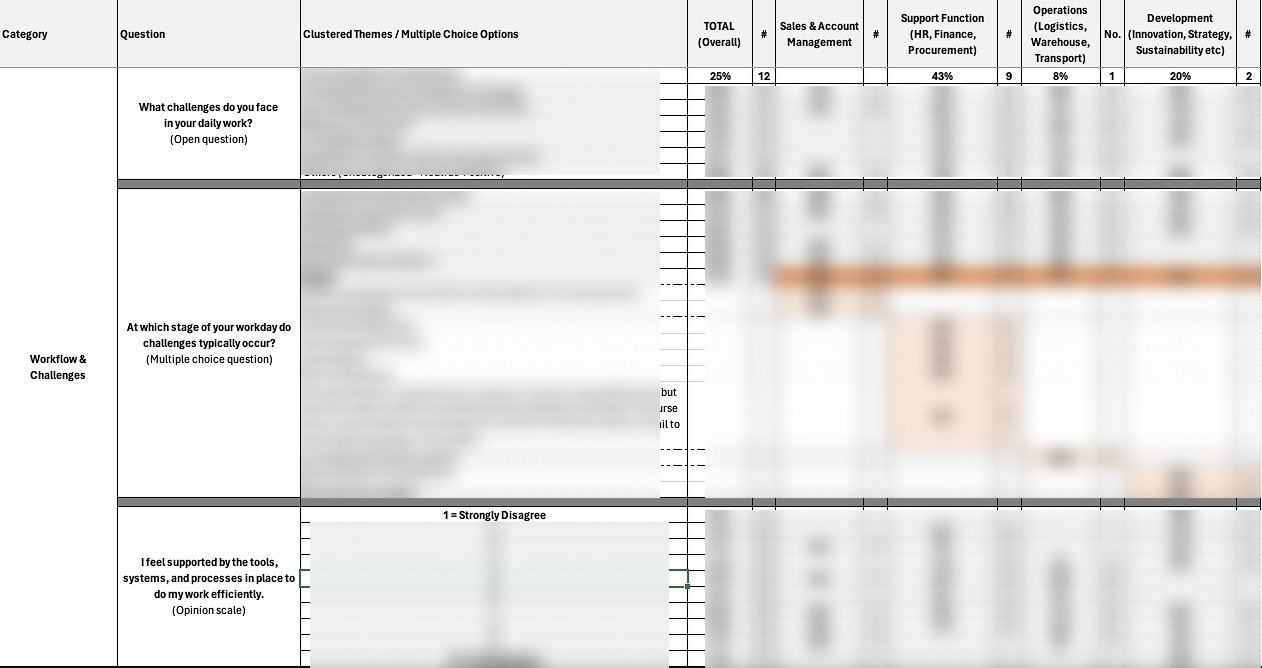
Pre-Workshop Prep
Data Synthesis, Organisation and Validation
Data Synthesis, Organisation and Validation
While AI tools helped us cluster responses, we relied heavily on Excel to refine the data and ensure accuracy. Excel provided a clearer line-by-line view that allowed us to track leader participation (since the survey was anonymous) and systematically break down the data by main topic, subtopic, and common themes. We also mapped which leaders mentioned specific challenges, along with their respective functions.
One of the key gaps in the survey tool was its inability to track responses by function—a critical view we needed to highlight functional perspectives to leadership. This required us to manually re-organise and validate the data. The most challenging and time-consuming aspect was validation: we needed to ensure that every insight could be traced back to the original interview transcript or survey response. This way, if clients asked, “Where did you get this?” we could point directly to the source and back up our claims with confidence. Bridging AI-generated clusters with this rigorous human validation ensured that insights remained both reliable and contextually accurate.
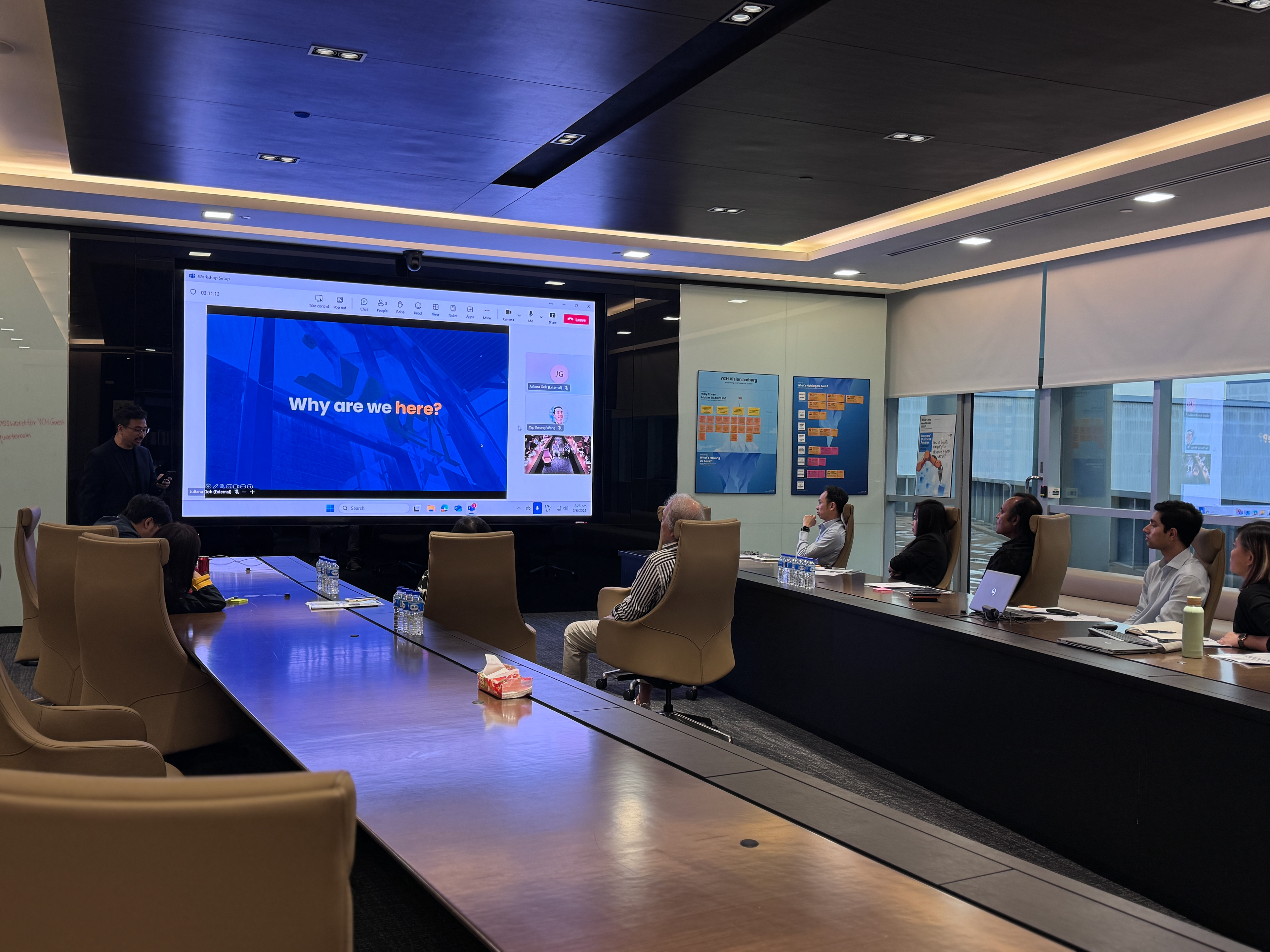
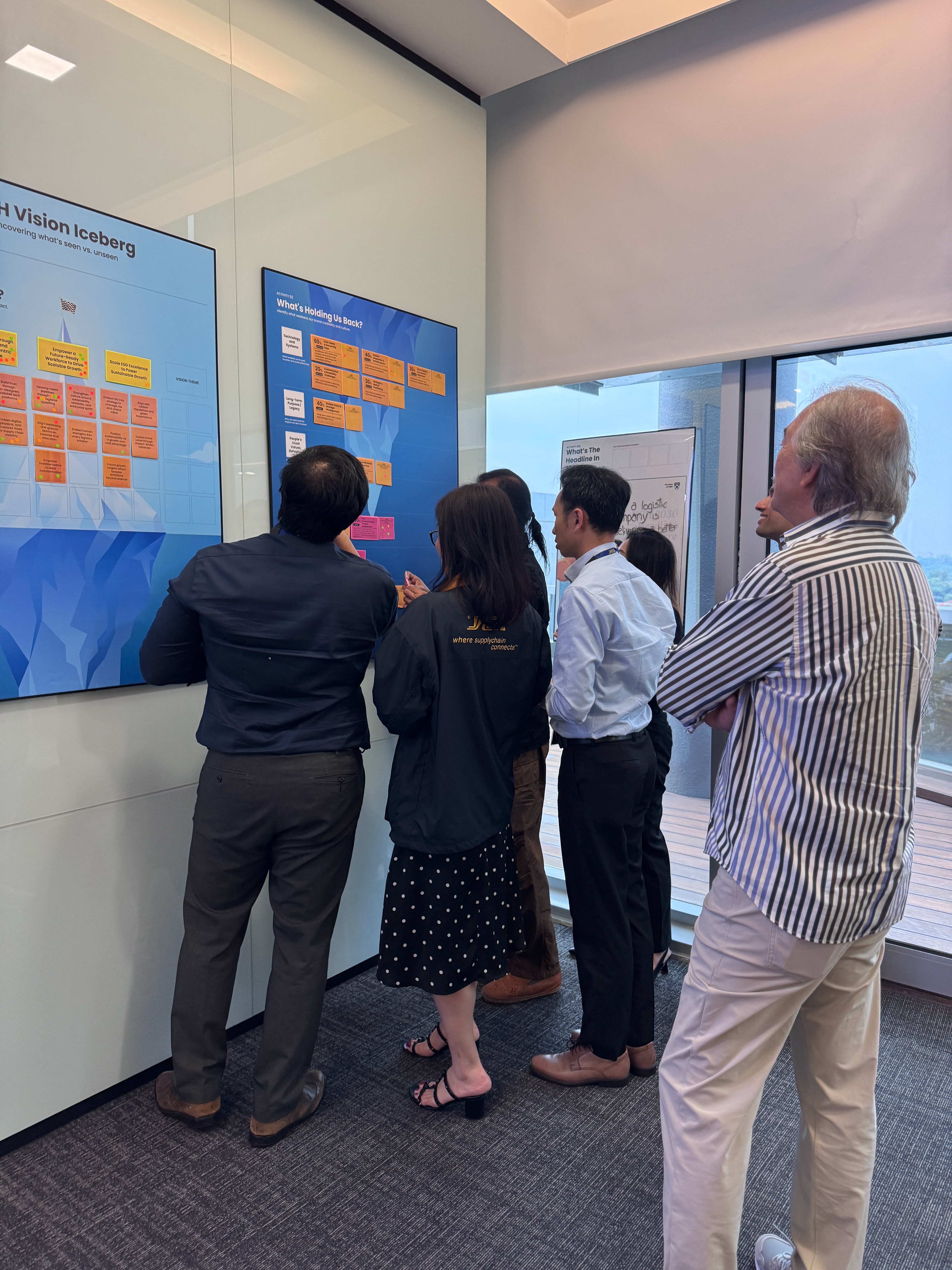
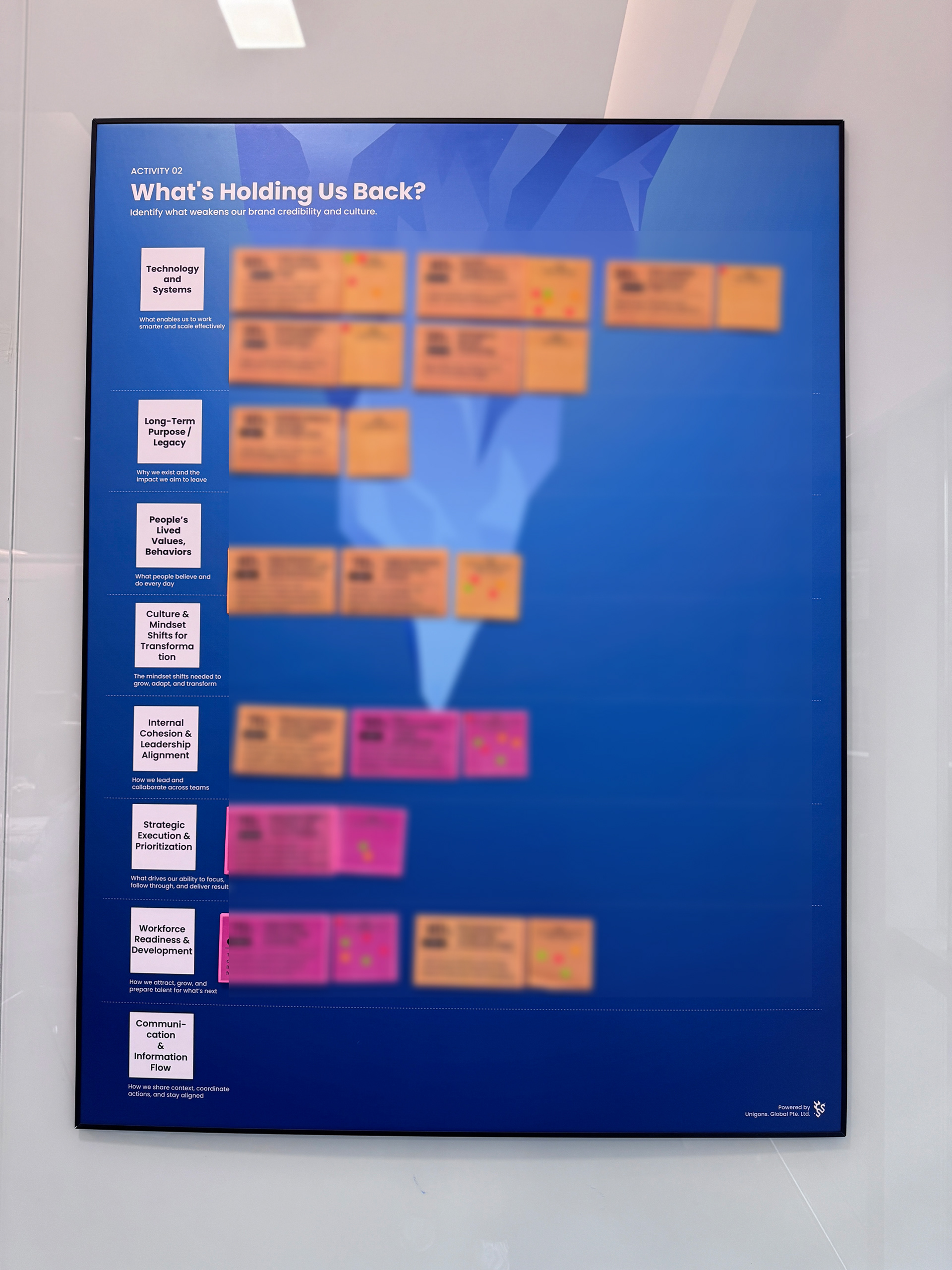
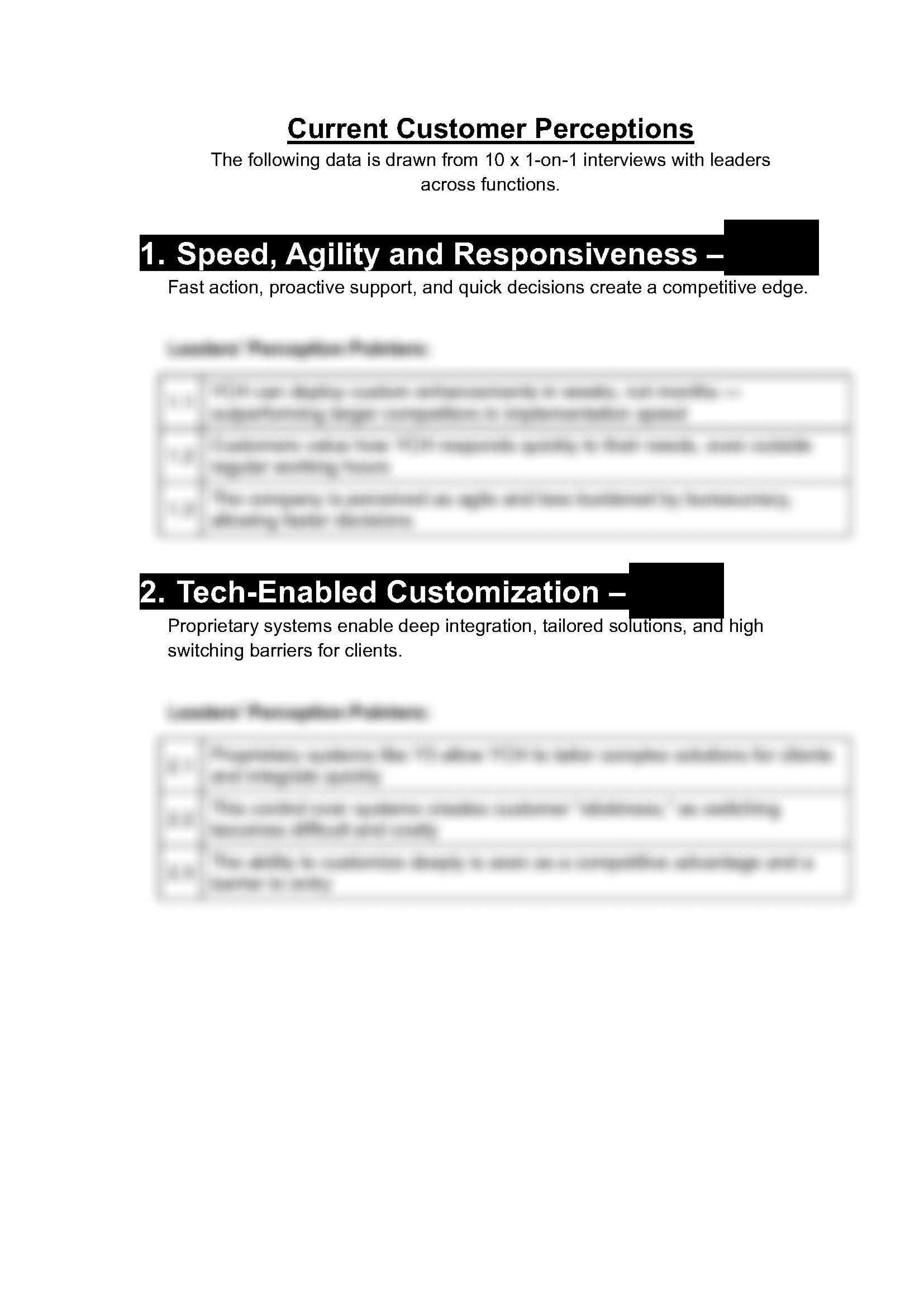
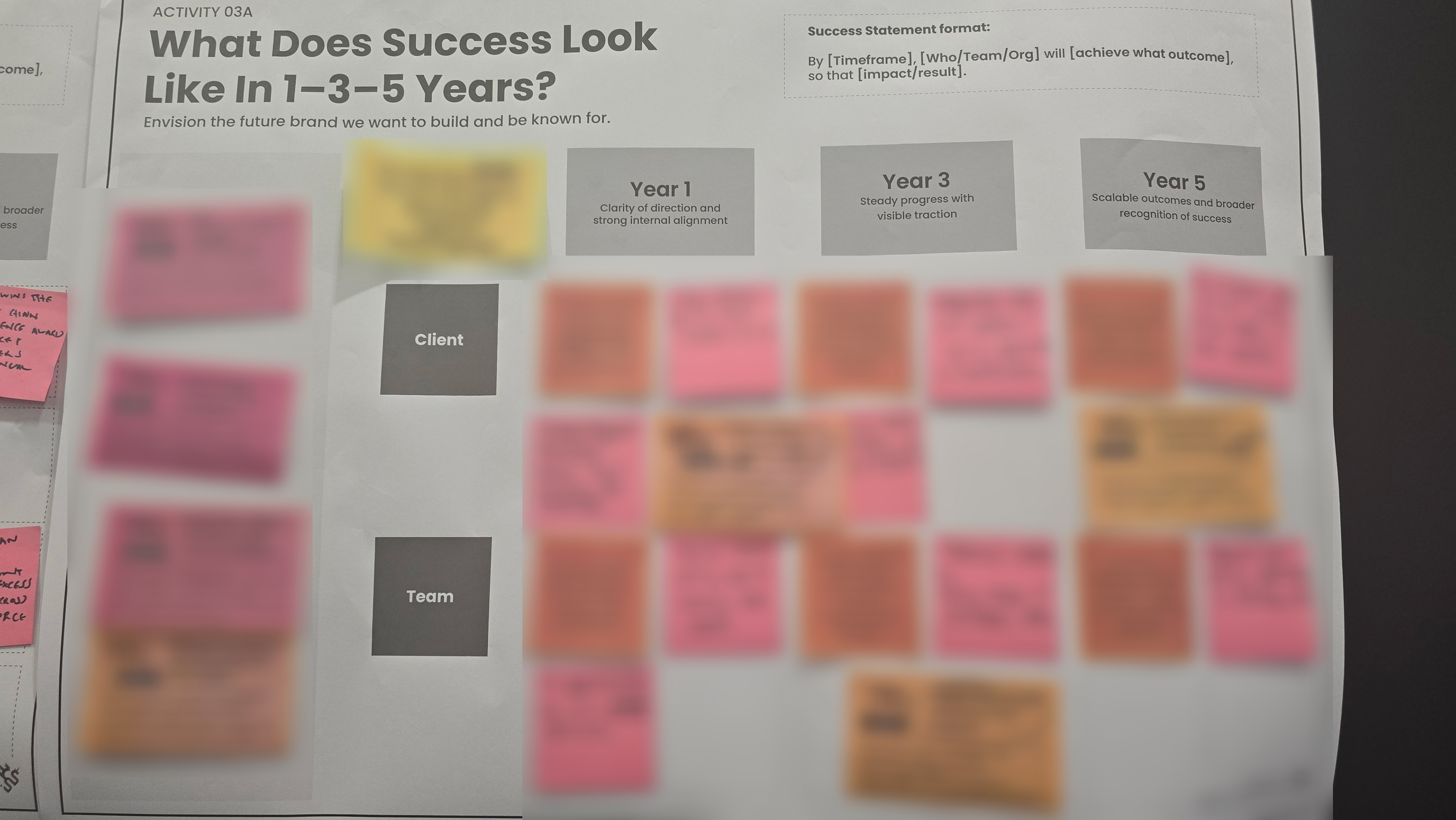
Conducting the Workshop
To set the stage, we created customised documents for each leader, linking back to the data we had collected and synthesised. This allowed them to follow the deck with confidence, knowing that every insight presented could be traced back to actual interviews or survey responses. Before diving into activities, our colleague opened with a session on the importance of branding and how it can directly impact business value—an essential step in building credibility and buy-in with the leadership team.
The workshop itself was designed as a series of interactive, progressive activities. The first activity focused on vision alignment: leaders were asked to create and vote on vision statements that best defined YCH. This addressed a critical inconsistency we uncovered during interviews—many leaders held different interpretations of the chairman’s vision. By reaching consensus on a unified statement, they could align on a clear narrative to cascade across their functions, reducing future confusion.
The second activity was the iceberg challenge prioritisation exercise. Leaders were presented with pre-grouped examples of organisational challenges (synthesised from interview and survey data) and asked to vote on which barriers were most critical to address. While they had the freedom to move items around and add new ones, the structure helped spark meaningful conversations. This activity not only clarified the most urgent priorities but also surfaced cross-functional awareness—leaders could see challenges outside of their own functions, building empathy and shared accountability.
The third and final activity was a future visioning plenary. Leaders were split into three groups, each tasked with huddling around a different theme. Using prepared templates, they worked to consolidate their vision statement, identify challenges, and define what success would look like for YCH in the next 1, 3, and 5 years. This exercise encouraged them to think beyond day-to-day issues and consider YCH’s long-term north star—what they wanted the company to be known for and how to shape the ideal future state. The hands-on nature of this session fostered ownership and active participation, ensuring that the vision was not just top-down, but co-created.
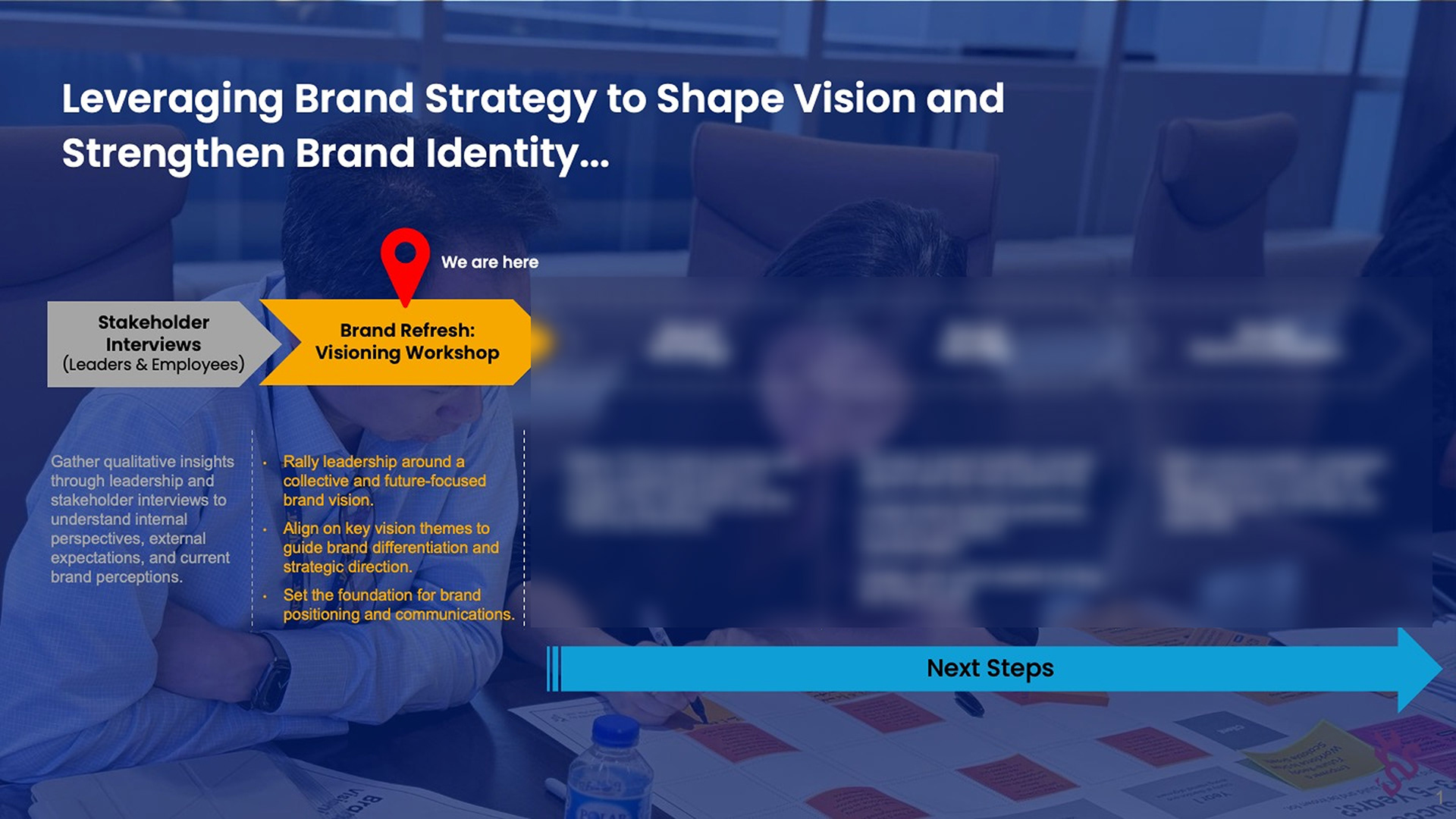
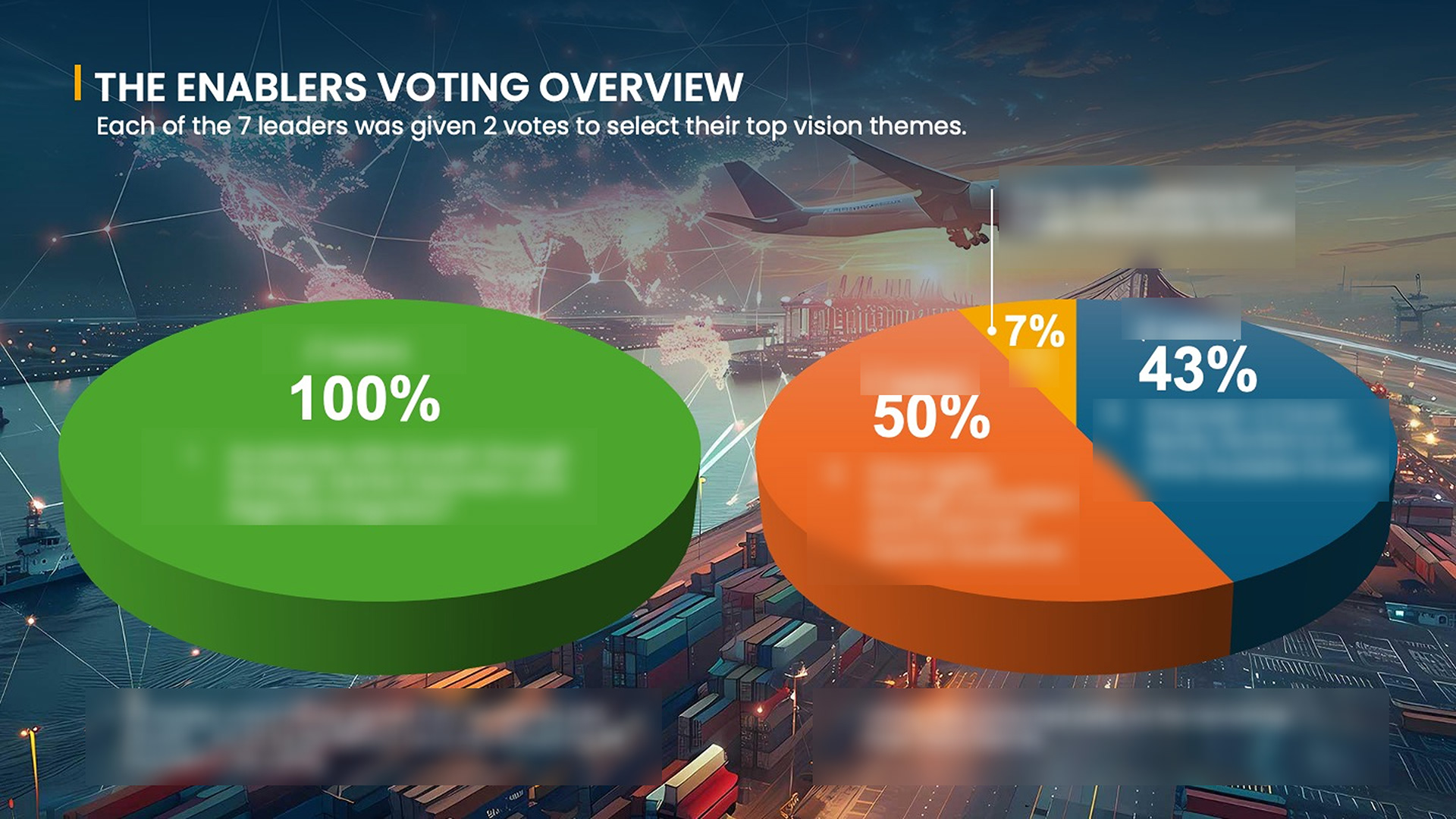
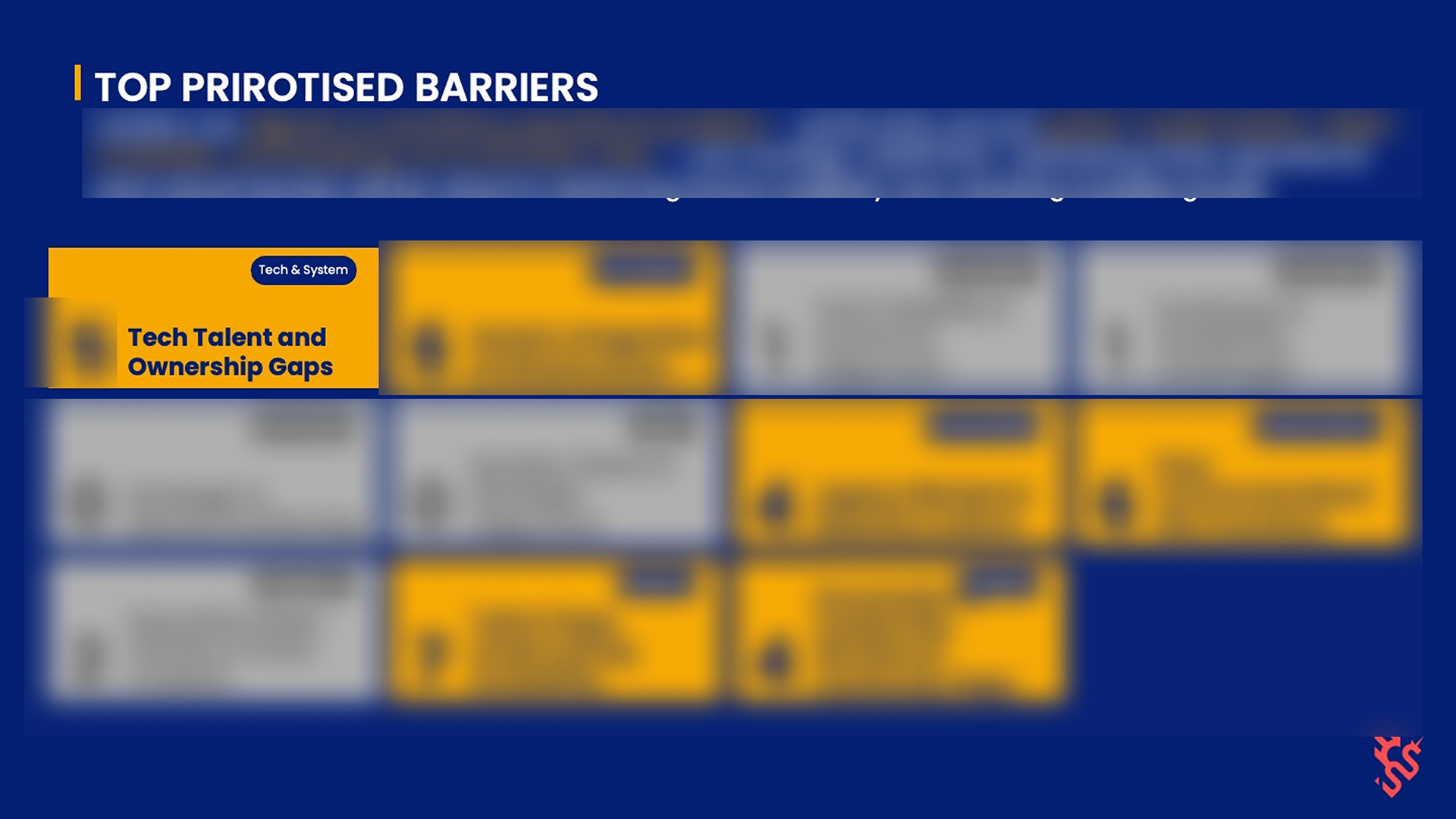
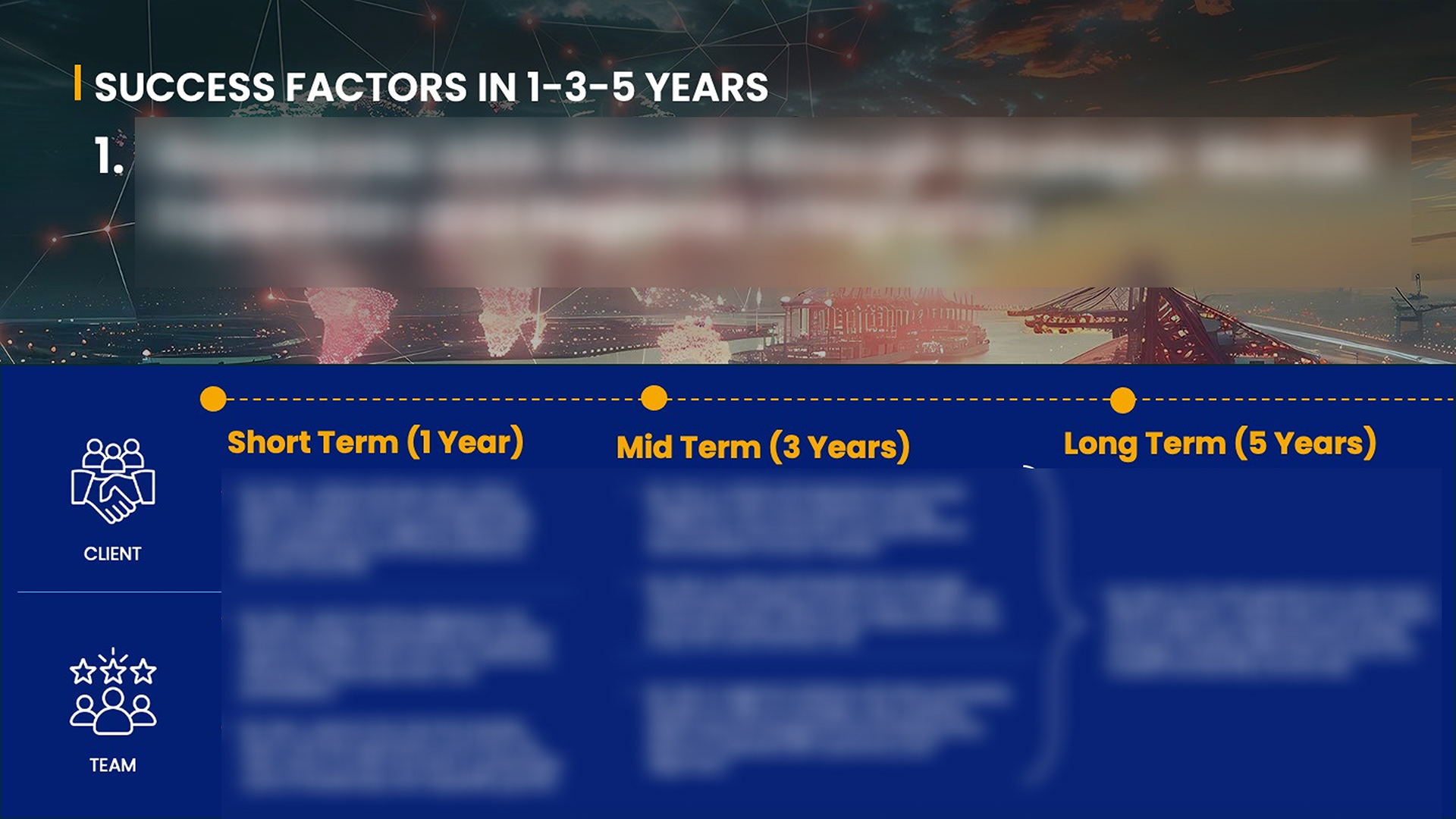
Post Workshop
Following the workshop, we created a comprehensive post-workshop deck that outlined the executive summary, key findings, and recommended next steps. With the help of AI, we transcribed the full three-hour session, which allowed us to capture rich discussion points and integrate them into the report.
The final deliverable served as both documentation and a decision-making tool for YCH. It consolidated workshop insights into clear themes, surfaced priorities identified by leaders, and provided a foundation for management to decide on the outcomes they wanted to pursue. By presenting the data in a structured way, the report gave YCH leadership clarity on how the vision, challenges, and success markers discussed in the workshop could translate into a tangible roadmap forward.
